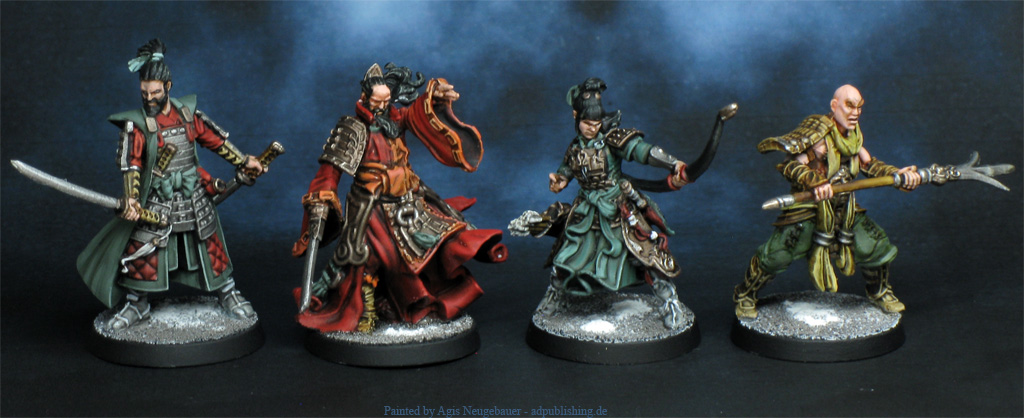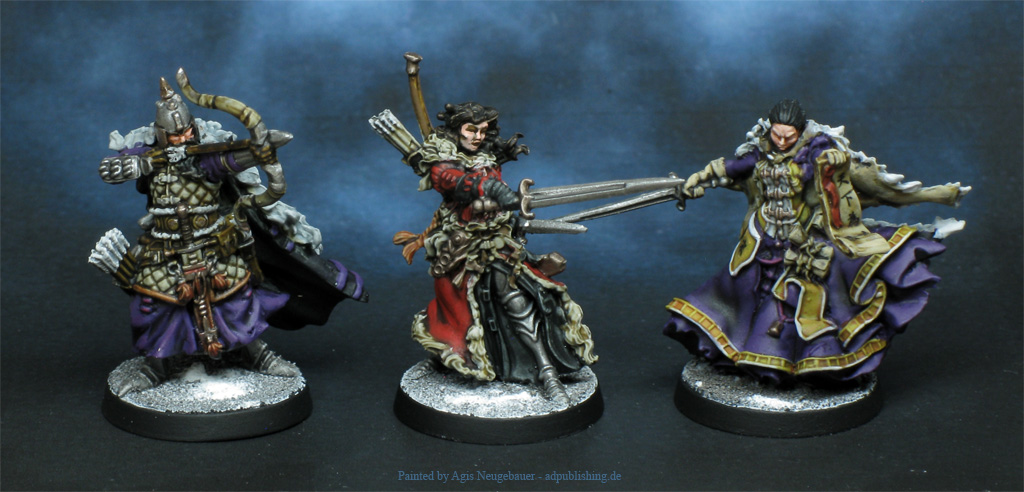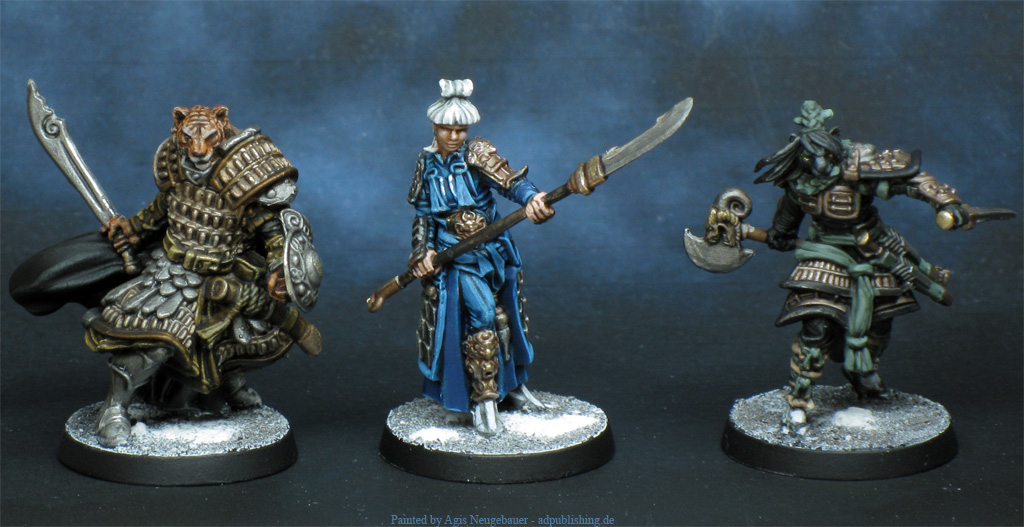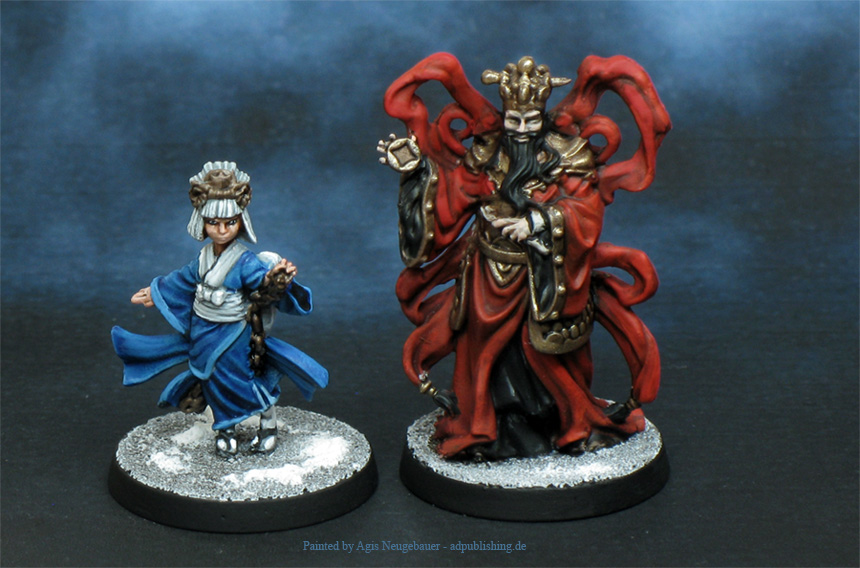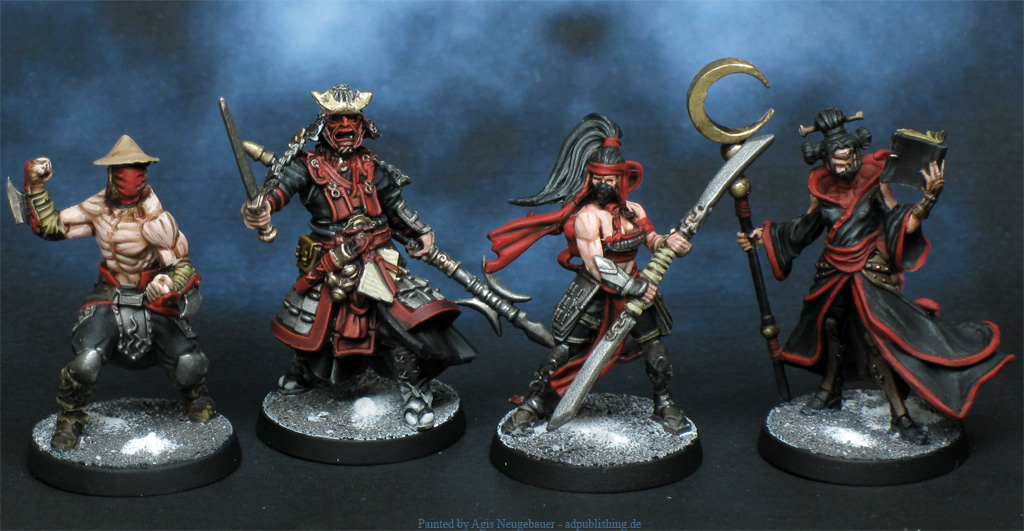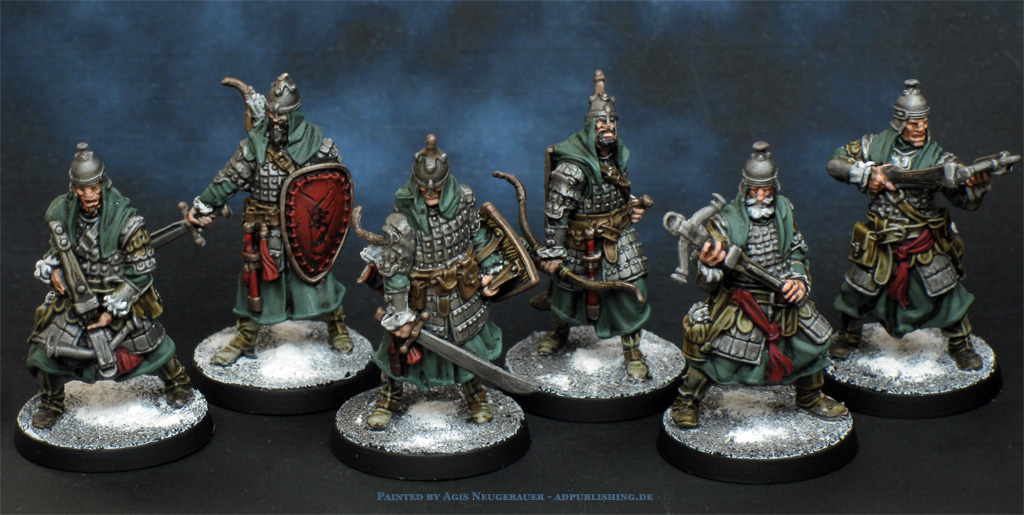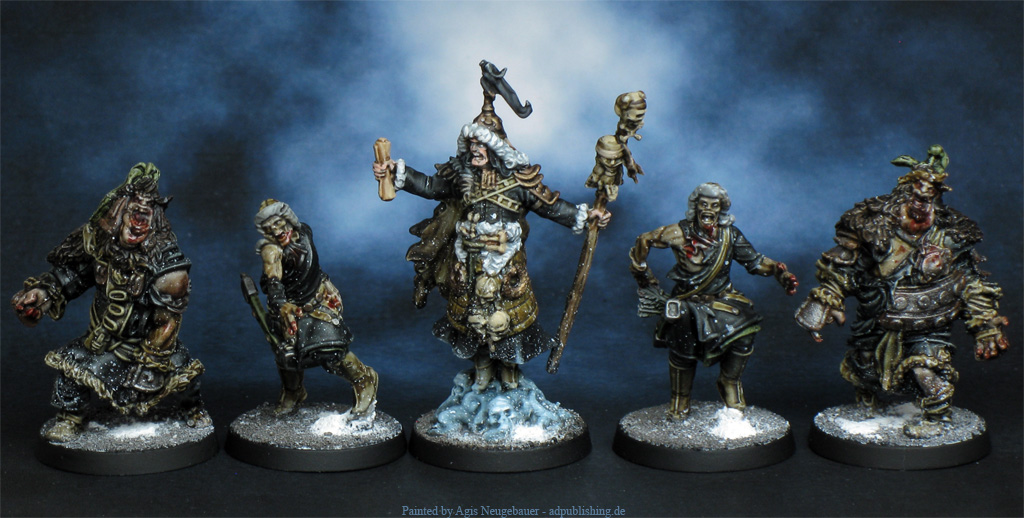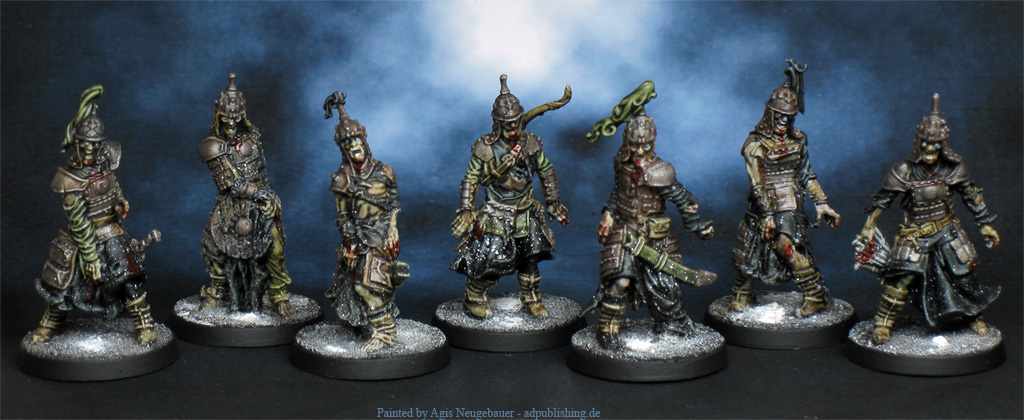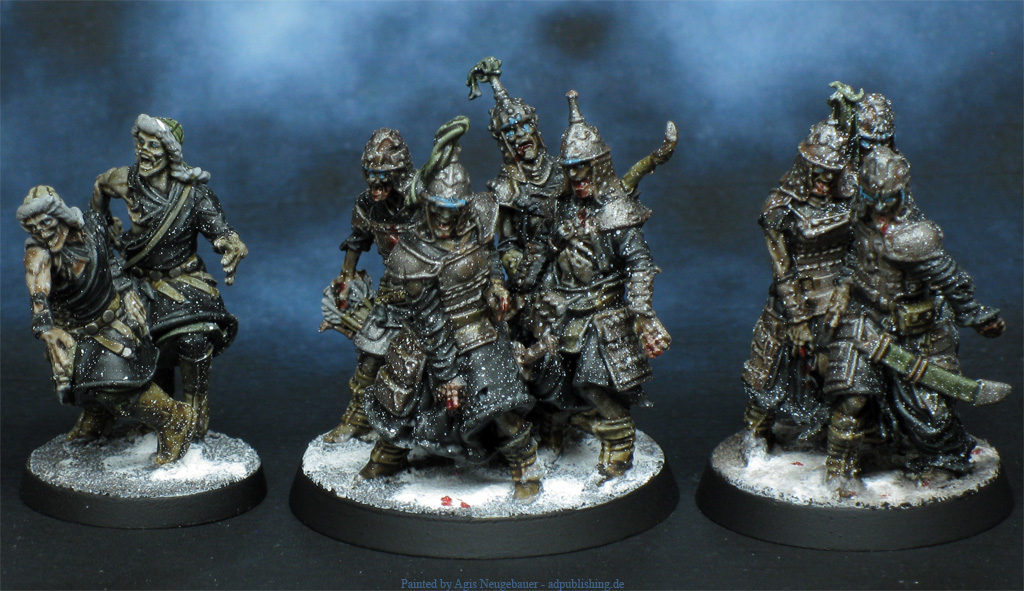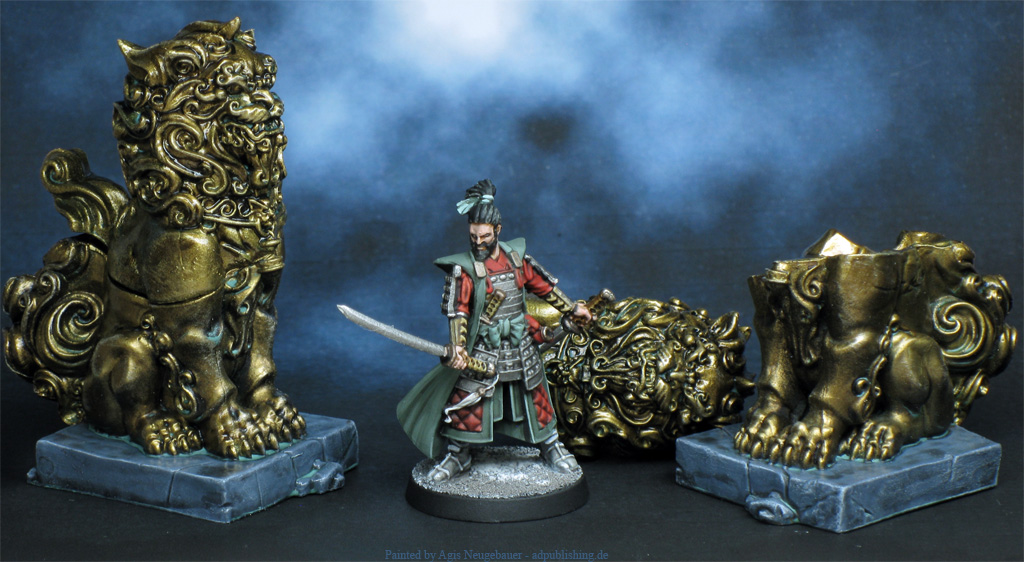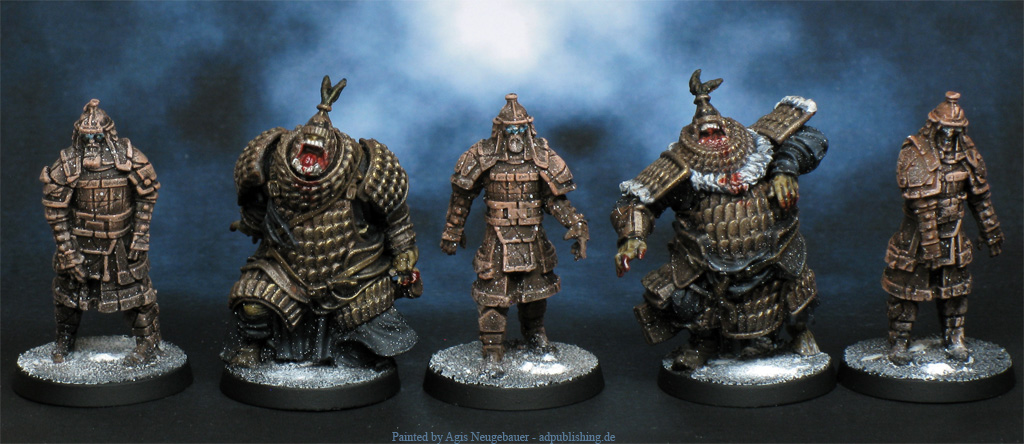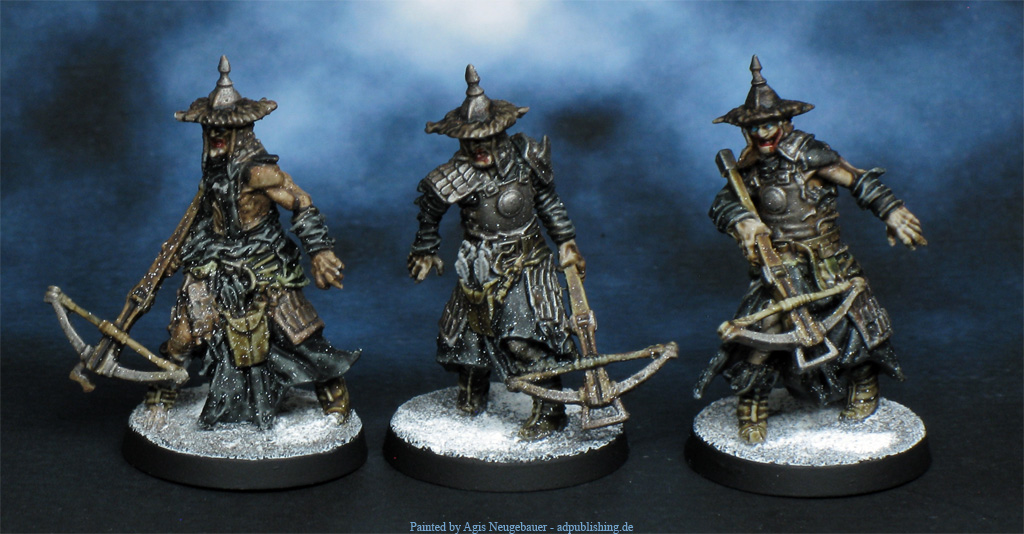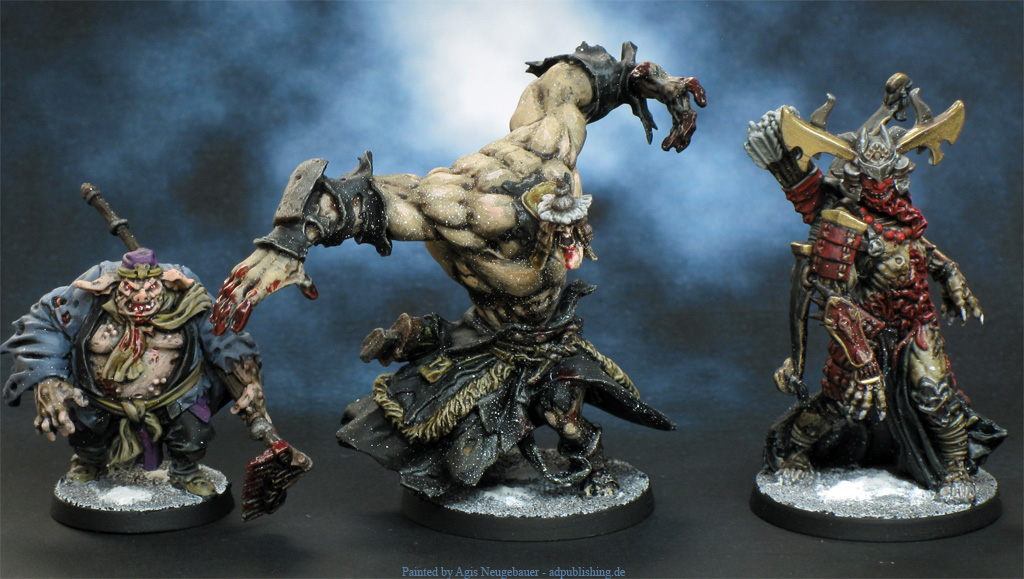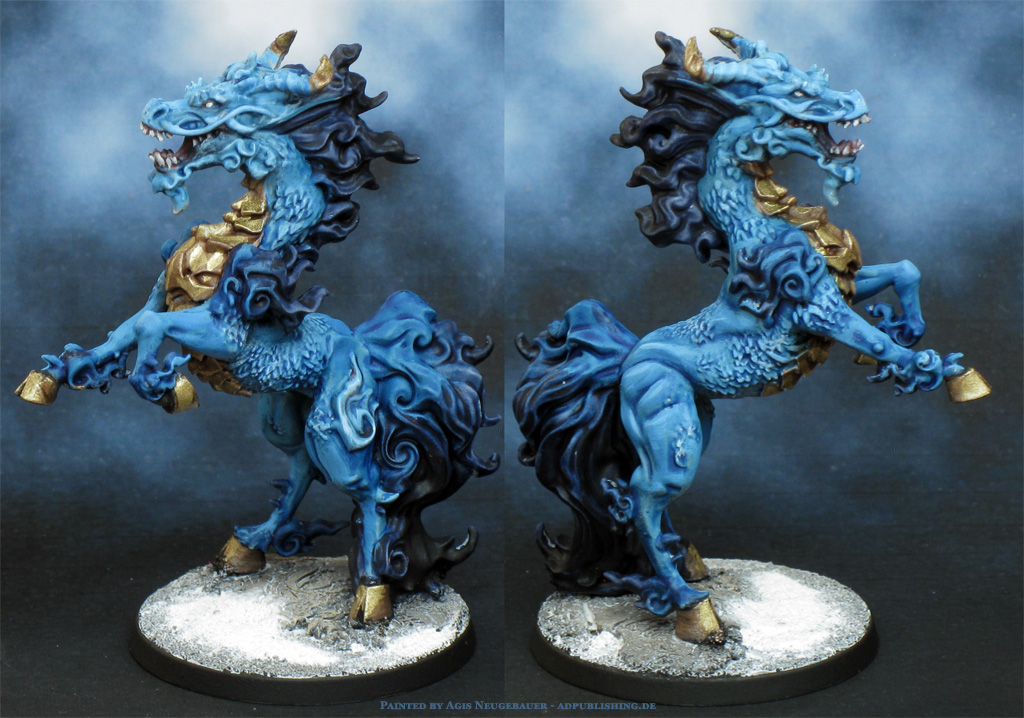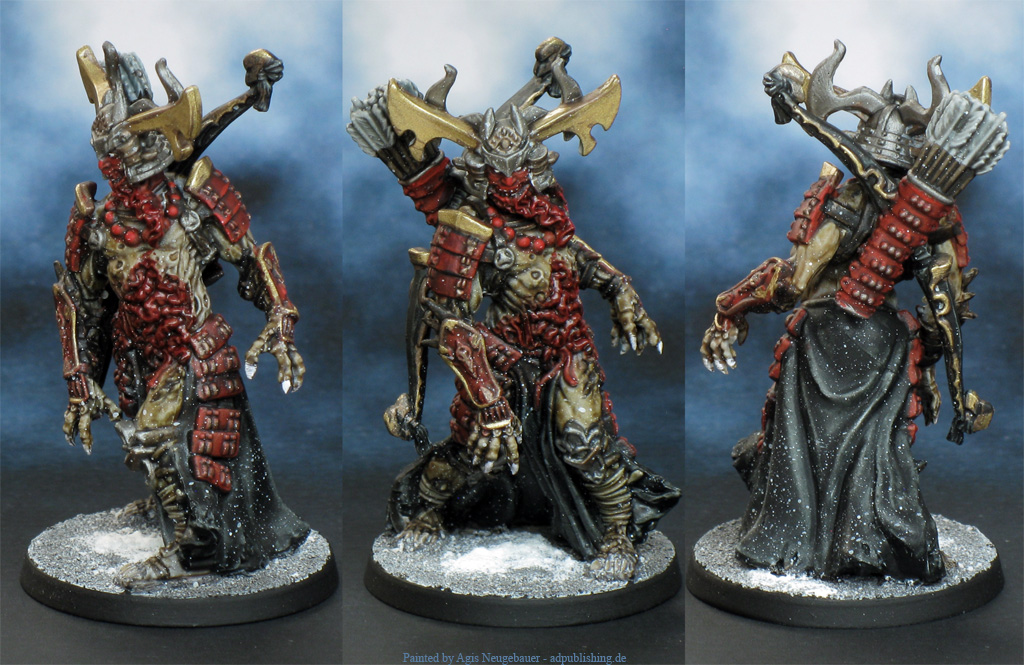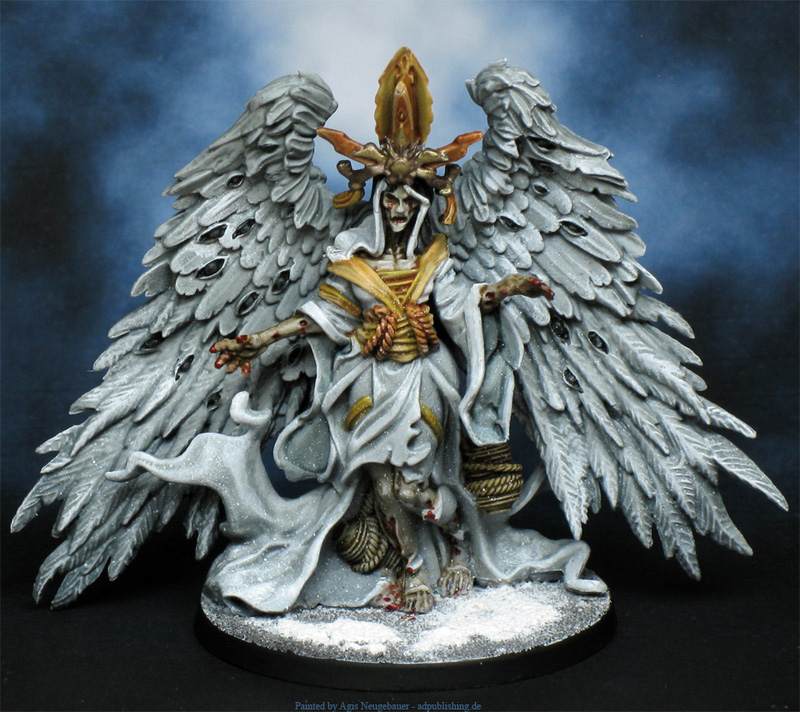|
|
 |
||||||||||||||||||||
Zombicide - White DeathThe long-awaited sequel to medieval fantasy Zombicide is here, and this time, it brings a biting cold in an Asian era with it! I like the setting a lot and the rule variants.
I am painting the Survivors to fit L5R Clan colours. So Yasuke and Fangbao are from Mantis, while Zhi Shen is Phoenix and Zhu Yang would be a Dragon.
Both woman seem to outlander, so I decided to paint Dragomir and Sarnai as Unicorn, since this clan has the most to with people outside of Rokugan.
If you ask ChatGPT you can come up with some nice additional background: Yinying is a mysterious figure whispered about in ancient scrolls — a guardian born from shadow, who walks between worlds. Said to possess the grace of a flower and the courage of a forgotten dynasty, Yinying defends the balance between light and dark. Neither fully mortal nor spirit, they appear in times of great turmoil to guide the lost and strike down those who abuse hidden power.
Midoriko is a fictional character from Japanese popular culture, not an actual historical or mythological figure. She originates from the manga and anime series Inuyasha by Rumiko Takahashi, but her story draws loosely on spiritual and Shinto themes. Midoriko is a legendary priestess in the Inuyasha universe, renowned for her immense spiritual power. She fought demons to protect humanity and created the Shikon Jewel (Sacred Jewel) during her final battle. To prevent the jewel from falling into evil hands, she sealed part of her soul—and the demons’ souls—inside it, leading to an eternal struggle within the jewel. Midoriko symbolizes purity, sacrifice, and the spiritual battle between good and evil. Caishen (財神, also called Caishen Ye, “Lord God of Wealth”) is a major deity in Chinese folk religion and Taoism, associated with wealth, prosperity, and good fortune. He is often depicted in rich robes, carrying a scroll or ingots of gold. He remains one of the most widely worshipped deities in Chinese culture, symbolizing abundance and financial success.
Badang is a legendary strongman from Malay mythology, associated with the ancient kingdom of Singapore. Once a humble fisherman, he gained superhuman strength after freeing a water spirit in exchange for a wish. Badang went on to become a hero of the royal court, performing incredible feats of strength - most famously, hurling a giant stone into the sea, an act linked to the real-life "Singapore Stone." Since all are painted in Scorpion clan colour, Shosuro Badang is my take. Maeda Matsu was a prominent noblewoman during Japan’s Sengoku and early Edo periods. The wife of Maeda Toshiie, a powerful general under Oda Nobunaga and Toyotomi Hideyoshi, she was renowned for her intelligence, strength of character, and political acumen. Uesugi Aya was a noblewoman from Japan’s Sengoku period (16th century), best known as the sister (or half-sister) of Uesugi Kenshin, one of the most famous warlords of the time. She was also the mother of Uesugi Kagekatsu, who became Kenshin’s adopted heir and successor. Soshi Uesugi Aya is my take.
Eternal Empire “Ancient nobles used to be buried in mounds along with guards to escort them into the afterworld. Rumor has it that these unfortunate souls were replaced with golems, living statues meant to protect burial mounds from intruders. As the nobles were corrupted by necromancers, so were these ancient protectors. Sharing an uncanny likeness to zombies, terracotta walkers can bring each other back from destruction by their mere presence.” I really liked the idea of having the ancient Terracotta statues to become animated, great sculpts and dead simple to paint! “Nestled in the depths of the wintery land, far from other civilizations, the Eternal Empire has finally opened its gates to outsiders, in search of help against the zombie plague! Eternal Empire is a campaign expansion for Zombicide: White Death. This first-ever campaign expansion for medieval fantasy Zombicide features advanced equipment, new areas to explore, new Survivors, new Zombies, and a unique new Chi mechanic!” I am absolutely looking forward to play the campaign.
Abominations and a special Brute The Kickstarter unlocked the usual huge amount of extra miniatures.
Zhu Bajie, also known as Pigsy or Pig, is a well-known character from the classic Chinese novel Journey to the West (Xīyóu Jģ), written in the 16th century by Wu Cheng'en. A former heavenly general named Marshal Tian Peng, Zhu Bajie was banished to Earth and reborn as a half-man, half-pig creature after violating celestial rules.
Unlike dragons, Qilin are gentle and avoid harming any living creature, even refraining from walking on grass to avoid killing it. In art and literature, they represent justice, serenity, and the arrival of peace.
Hachiman is typically depicted as a divine warrior or archer, sometimes riding a white horse, and is often invoked for protection in battle and success in endeavors. His worship symbolizes the ideal fusion of spiritual devotion and martial discipline.
Amaterasu is the Shinto sun goddess and one of the most important deities in Japanese mythology. Her full name is Amaterasu-Ũmikami, meaning "Great Divinity Who Shines in the Heavens." She is considered the ruler of the heavens and the ancestor of the Japanese imperial family.
Hannya is a figure from Japanese folklore and Noh theater, representing a woman transformed into a vengeful demon due to overwhelming emotions such as jealousy, rage, and sorrow. The name "Hannya" (般若) is also the Japanese word for wisdom, a reference to the complex duality of the character: a being consumed by pain, yet still possessing human feeling. Often the spirit of a woman betrayed or abandoned in love, who becomes a yōkai (supernatural creature). Though she is frightening, her story is rooted in human vulnerability, making her a symbol of how deep emotional suffering can lead to monstrous transformation.
|
||||||||||||||||||||
